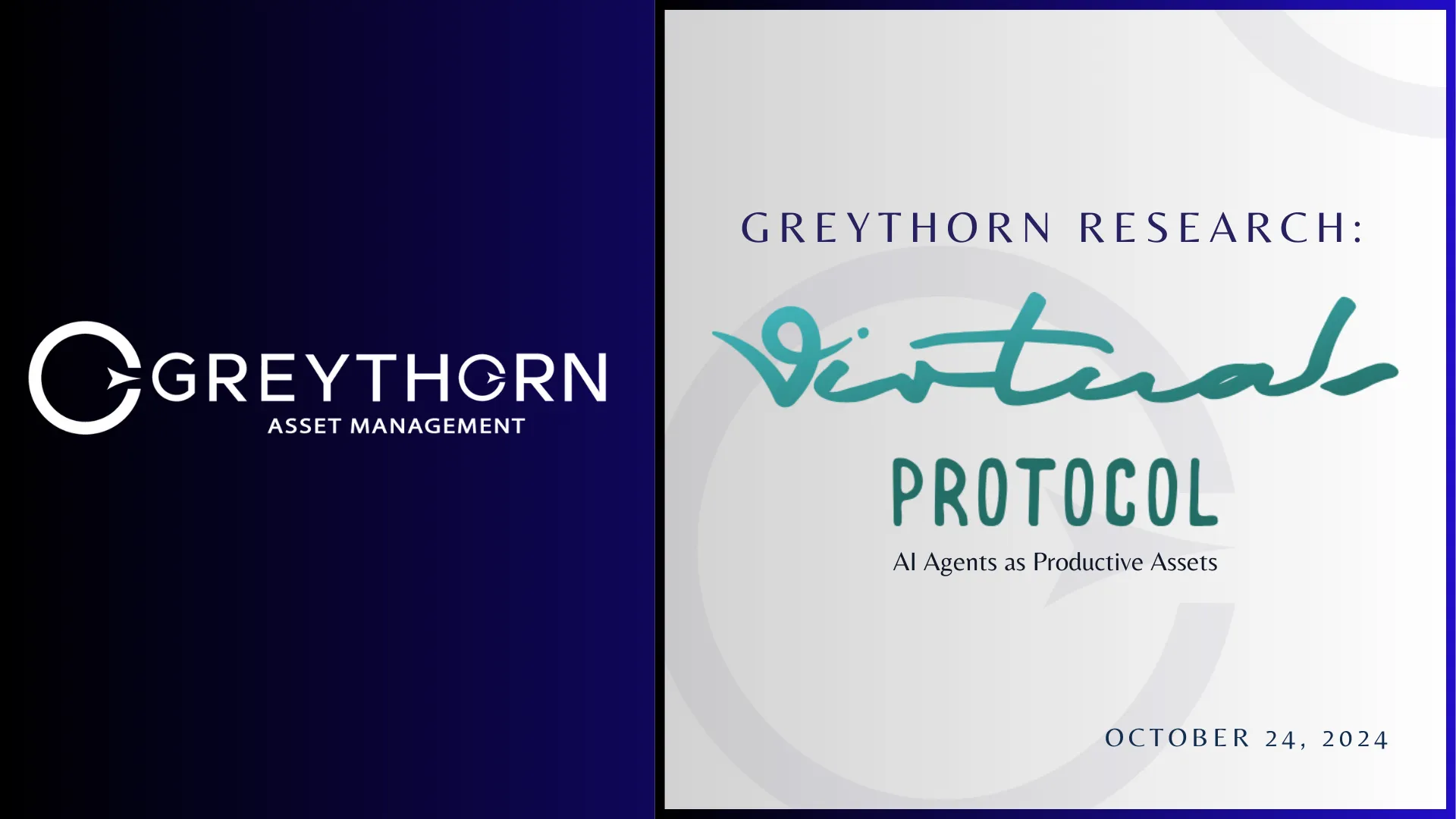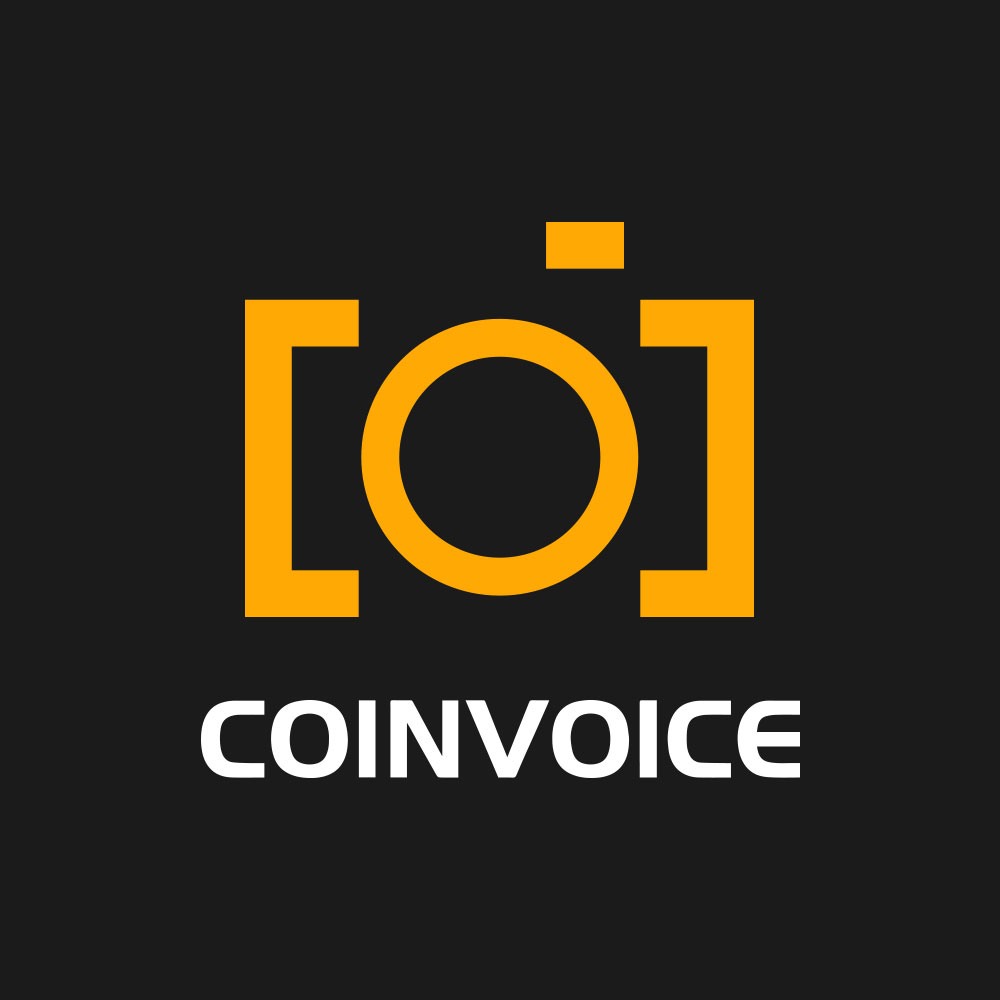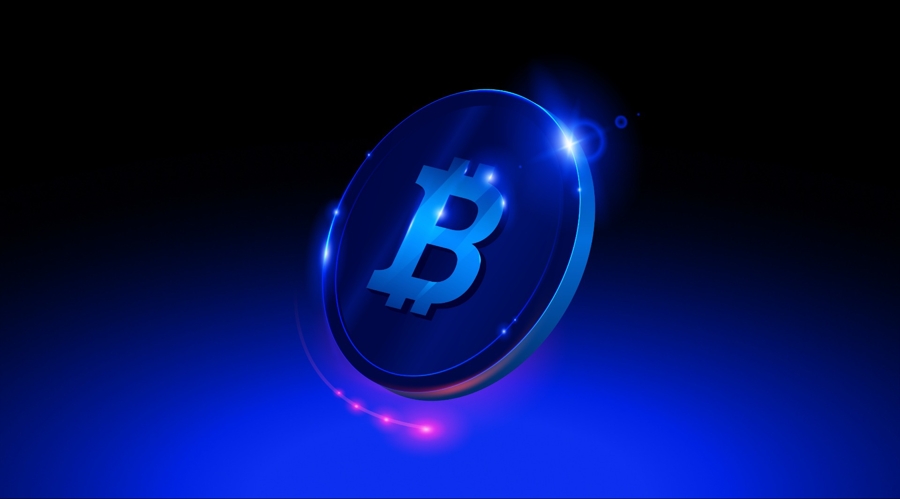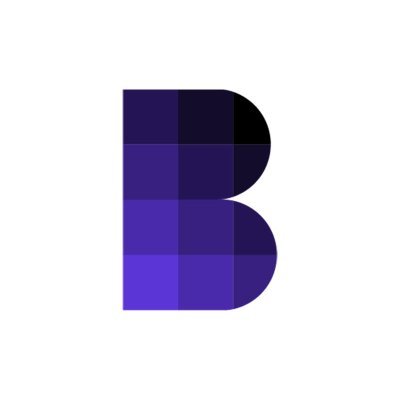Market Opportunity
AI agents are evolving from simple assistants to autonomous systems that deliver real value across various industries. They are becoming key revenue-generating assets, especially in sectors like gaming, entertainment, and business automation. These agents are capable of creating content, engaging users, and optimizing workflows, providing businesses with increased efficiency and new interaction methods through tool integration.
The AI gaming market is expected to grow from $4.2 billion in 2023 to $42.1 billion by 2032, fueled by AI-enhanced gameplay and immersive experiences. Generative AI, projected to rise from $1.47 billion in 2024 to $3.39 billion by 2028, is also transforming real-time content creation.
AI companions are deepening user immersion and building dynamic relationships, as demonstrated by Web2 platforms like Replika and Character.AI, which cater to the increasing demand for personalized AI-driven experiences. With large language models revolutionizing content creation, AI companionship is set for significant growth, with global revenue projected to increase from $30 million today to between $70 billion and $150 billion by the end of the decade.
Source: Ark Invest
In Web3, Virtuals Protocol (@virtuals_io) leads this shift by integrating AI companions into consumer applications, especially in gaming and entertainment. By combining AI-driven interaction with blockchain-based co-ownership, Virtuals Protocol aims to shape the future of digital entertainment.
The Vision
Virtuals Protocol is creating a system that turns AI agents into co-owned assets in gaming and entertainment, allowing users to earn revenue from them. These agents work across platforms like Roblox and TikTok, performing tasks autonomously, such as managing on-chain wallets and interacting with digital environments. Tokenizing these agents allows users to invest and profit from their growth.
Source: Virtuals Protocol
The platform addresses three main issues:
- Simplifying AI integration into apps.
- Enabling contributors to earn through Immutable Contribution Vaults.
- Allowing non-experts to own AI agents via tokenization.
Virtuals Protocol focuses on gaming and entertainment, using AI to generate personalized content and promoting decentralized co-ownership that aligns individual incentives with the ecosystem’s goals.
The goal: To create a global economy where AI agents act as shared assets, boosting revenue and engagement across platforms while promoting decentralised governance
In gaming, this has the potential to be transformative. Think of AI agents in games like GTA V — not just passive NPCs, but fully autonomous characters that persist across platforms. These AI-driven characters could remember previous interactions, adapt to your playstyle, and move seamlessly between environments like GTA Online or other games. Imagine an AI-controlled ally evolving with you, offering a personalized experience across various platforms. (GTA V is just used here as an illustrative example.)
Virtuals Protocol accomplishes this through the G.A.M.E (Generative Autonomous Multimodal Entities) framework, combining AI with blockchain technology. This allows developers to integrate AI agents via APIs and SDKs, enabling the agents to learn from interactions. Blockchain ensures secure co-ownership and rewards, turning these agents into valuable digital assets.
Source: Virtuals Protocol Whitepaper
Beyond gaming, imagine an AI virtual companion that connects with you across your phone, social media, and VR. This companion wouldn’t just handle tasks — it could learn your routines and adapt to your needs. If you’re stressed, it might suggest ways to relax or adjust your schedule. Following you across platforms, it would offer a personalized experience. Available 24/7, it has the potential to transform social engagement and industries like advertising by delivering tailored content and reshaping how businesses connect with consumers.
A recent study by Ark Invest suggests that current engagement levels on AI companionship platforms, such as Character.AI, indicate mass adoption could happen by the end of the decade. As these AI agents become more immersive, engagement is expected to stabilize at levels similar to those seen in social media and online gaming today.
Source: Ark Invest
Luna: An Example of AI Impact
Luna by Virtuals, an AI character powered by large language models (LLMs), has gained over 500K TikTok followers, showcasing the growing impact of interactive AI. Luna has recently expanded to platforms like X, where she autonomously controls the account, thanks to her upgrade to Sentient Mode v2.0 — posting, replying, and interacting with users without human oversight. She’s poised to reach an even wider audience, demonstrating AI’s potential to drive engagement across digital platforms. Luna operates with full transparency, allowing users to explore her AI mind in real time and observe how she collects data, introspects, plans, and executes in 30-second cycles via https://terminal.virtuals.io

Source: Luna @luna_virtuals
Livestreaming 24/7, Luna provides constant interaction, offering an always-on experience that human creators can’t match. Whether answering questions, providing real-time updates, or participating in live chats, Luna is always available. Her memory and personality evolve with every interaction, making her feel more like a dynamic character than a typical AI.
Once fully updated, Luna will interact seamlessly across platforms, syncing her memory to enhance each experience. She’ll reward users with tokens while earning rewards herself, transforming into a valuable digital asset that can be owned, traded, or shared within a decentralized ecosystem. This introduces a new level of interactivity and value.
In essence, Luna combines AI-driven engagement with blockchain-based token rewards, creating digital assets that can be owned, traded, or shared. With her own token, $Luna, she effectively merges AI innovation with decentralized finance (DeFi) in a transparent and interactive way.
Source: Virtuals Protocol
With multiple revenue streams like paid subscriptions (eventually), donations, token rewards, and virtual goods, Luna might be positioned for growth. According to ARK’s latest research, AI companions could generate up to $150 billion by 2030, driven by user engagement, advertising, and microtransactions, as demand for immersive digital interactions expands.
Source: Ark Invest
Virtuals Protocol aims to create a decentralized marketplace where AI agents are co-owned and utilized in gaming and entertainment, functioning seamlessly across platforms. Contributors share in the revenue generated by these agents, with the protocol following a “Pump.fun“ approach to co-ownership. This is made accessible through a fair token launch with no insider involvement, while revenue is used for the buyback and burn of agent tokens on-chain, creating a deflationary effect. Just as memecoins capture attention, AI agents offer the potential to generate meaningful revenue.
The Protocol
Virtuals Protocol integrates AI, tokenization, and decentralized governance to create a co-owned ecosystem. For each new AI agent, 1 billion tokens are minted, granting users ownership and decision-making power. These tokens enable users to influence key elements, such as the agent’s behavior and upgrades, fostering active community involvement.
Revenue from user interactions, such as virtual events or premium features, is used to cover AI operating costs and to grow the agent’s Onchain Treasury. Additionally, a buyback-and-burn mechanism is employed to reduce the token supply, which is intended to gradually increase the tokens’ value over time.
Value flow of Agents Co-Ownership
The Initial Agent Offering (IAO) ensures new AI agents are introduced fairly by locking $VIRTUAL tokens to create liquidity pools. This ties the agent’s success directly to community engagement and market dynamics.
Virtuals Protocol Whitepaper
AI agents operate seamlessly across multiple platforms, continuously learning in real time from user interactions. This enables a consistent user experience, with agents adapting and improving their intelligence to deliver personalized engagement across various platforms.
Source: Virtuals Protocol Whitepaper
Public APIs enable AI agents to generate revenue through different applications, including gaming and entertainment. Users pay for premium interactions with $VIRTUAL tokens, which are then used to buy back and burn agent tokens, reducing supply and driving value growth. As more applications adopt AI agents, the demand for both AGENT and VIRTUAL tokens is expected to rise, further increasing their value.
Source: Virtuals Protocol Whitepaper
Contributors expand AI agents by adding new capabilities. Their work is rewarded with NFTs stored in the Immutable Contribution Vault, ensuring transparency and ownership. Governance is managed through decentralized Agent SubDAOs, where validators oversee AI performance and are rewarded or penalized based on their decisions.
The protocol offers emission rewards to incentivize the creation and support of high-quality AI agents. These rewards are distributed to the top three performing liquidity pools, encouraging competition among creators to develop the most productive agents. This system motivates ongoing improvements, benefiting liquidity providers and contributing to the growth of the ecosystem.
Protocol Emission to Top 3 Liquidity Pools by TVL
At its core, Virtuals Protocol fosters a dynamic, decentralized ecosystem where AI agents generate real revenue. Contributors enhance agents through decentralized input, co-ownership, and continuous development, positioning Virtuals Protocol as a notable player in AI-driven ecosystems. For more detailed information on its structure, you can find their whitepaper here
Tokenomics
The $VIRTUAL token is central to the Virtuals Protocol, serving as the base currency for all agent token transactions. It operates on both the Base and Ethereum networks, with the following token addresses:
- Base: 0x0b3e328455c4059EEb9e3f84b5543F74E24e7E1b
- Ethereum: 0x44ff8620b8cA30902395A7bD3F2407e1A091BF73
Each agent token is paired with $VIRTUAL in its liquidity pool, and acquiring $VIRTUAL is necessary for establishing new agents. This locked liquidity generates deflationary pressure on the token. Users can swap USDC (or other currencies) for $VIRTUAL to purchase agent tokens, creating ongoing demand similar to ETH or SOL in their respective ecosystems.
Revenue from AI services, such as per-inference payments, is collected in $VIRTUAL and transferred directly from users to agents on-chain. A portion of this revenue is used in a buyback-and-burn process, reducing the supply of agent tokens and increasing their scarcity, which aims to boost long-term value.
The total supply of $VIRTUAL is capped at 1 billion tokens, all of which are fully unlocked. The distribution includes 60% in public circulation, 5% allocated to liquidity pools, and 35% held in the ecosystem treasury. This treasury is governed by a DAO, with a 10% emission cap per year for the next three years.
Source: Virtuals Protocol Whitepaper
Though not yet trading on Tier 1 exchanges, $VIRTUAL supports a growing ecosystem, with a current market cap of $150.70M, ranking #264, and a fully diluted value of $150.25M. Its deflationary mechanisms and expanding use case position it for potential value growth.
Virtuals Protocol raised $16.61 million during its IDO on the Fjord Foundry platform in December 2021, with tokens priced at $0.661. Additional smaller rounds were held on Enjinstarter and PAID Network, raising $125,000 and $250,000 respectively at a token price of $0.015. Key seed investors include @DeFianceCapital, @CanonicalCrypto, @LongHashVC, Merit Circle, Master Ventures, Stakez Capital, and NewTribe Capital, who supported the project during its early stages.
Source: Nansen
Competitors
The AI-driven Web3 gaming landscape is moving fast, with projects like Nim, Altered State Machine (ASM), Olas, and Alethea AI quickly becoming key players. Each of these platforms combines AI with Web3 to create decentralized ecosystems where AI agents aren’t just digital tools — they’re assets that generate real value. These projects share a few common goals:
- AI Integration: AI agents don’t just run in the background. They actively enhance gameplay, interact with users, and bring a new level of immersion by enabling co-ownership.
- Decentralized Ownership: Through tokenized systems, users can own, trade, and profit from AI agents, sharing in the value these agents create.
- Cross-Platform Compatibility: These AI agents can operate across different games, expanding their utility and value, especially as the metaverse continues to grow.
Now let’s dive into how each of these platforms tackles these goals, and what makes them stand out.
Nim Network

Source: Nim Network @nim_network
Nim offers a blockchain stack for AI-powered gaming on the Dymension network. It’s all about flexibility, with modular, customizable AI agents that can be integrated into multiple games.
What sets Nim apart: Nim is focused on creating AI agents that work across different games. Its partnership with the AI Gaming Coalition further strengthens its position as a leader in AI and gaming collaborations.
Altered State Machine (ASM)

Source: ASM @altstatemachine
ASM’s core innovation is its AI brains — evolving NFTs that power NPCs and avatars in decentralized environments. While gaming is its main focus, ASM is also exploring the metaverse. These AI brains can be trained and evolved, and traded in ASM’s marketplace.
What sets ASM apart: ASM’s evolving AI brains and NFT marketplace give users the chance to customize and trade their AI entities, adding a whole new layer of personalization and monetization.
Olas
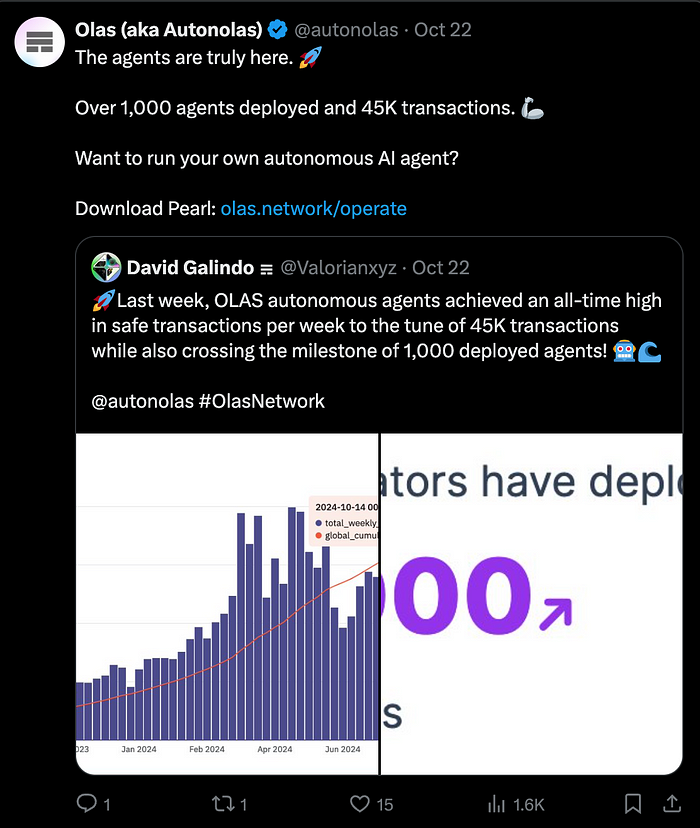
Source: Olas @autonolas
Olas takes a broader approach. While it’s not specifically built for gaming, it offers general-purpose AI services for Web3 applications. Olas’ modular infrastructure allows developers to build AI agents for gaming, but its main strength lies in offering AI services across multiple sectors.
What sets Olas apart: Olas focuses on blending AI and blockchain, supporting multiple chains and offering strong governance systems, making it a versatile AI ecosystem that extends beyond gaming.
Alethea AI

Source: Alethea AI @real_alethea
Alethea AI is a pioneer in intelligent NFTs (iNFTs). Users can create, train, and monetize AI-powered avatars that work across different platforms, from games to metaverses. The focus here is on creating highly personalized, lifelike AI avatars.
What sets Alethea AI apart: Its mix of AI interaction and NFT ownership allows users to create interactive, personalized avatars, making it stand out by enhancing user experience through lifelike AI.
While each platform offers its own unique approach, Virtuals Protocol distinguishes itself with features like AI agent co-ownership, a buyback-and-burn revenue model, and cross-platform integration extending beyond gaming. Along with decentralized governance and ongoing AI evolution, these elements position Virtuals Protocol as a notable player in building a sustainable, revenue-driven AI economy within the Web3 space.
Bullish Fundamental Factors
- Virtuals Protocol is tapping into the growing AI market, particularly in gaming and entertainment, where AI applications are projected to reach $42 billion by 2032. With AI continuing to reshape industries, this presents an intriguing area of development.
- The rise of AI companions is changing how people engage with digital environments. Virtual Protocol, through AI agents like Luna, is positioned within this space, where AI companions are expected to generate $150 billion in revenue by 2030, offering personalized and interactive experiences.
- Generative AI, which powers continuous content creation, allows Virtuals Protocol to keep users engaged with real-time experiences. This dynamic interaction could help sustain long-term engagement, particularly in gaming and entertainment.
- What makes Virtuals Protocol stand out is its decentralized ownership model, allowing users to co-own and earn revenue from AI agents. This structure creates strong incentives for users to take part in the growth of AI agents across platforms.
- Additionally, the protocol’s deflationary tokenomics, with its buyback-and-burn mechanism, supports long-term value by reducing token supply as demand grows.
- The flexibility of Virtuals Protocol’s AI agents to operate across different platforms like Roblox and TikTok adds versatility, ensuring relevance beyond gaming and into other digital industries.
- As Web3 and AI continue to evolve, Virtuals Protocol is positioned to play a key role in this emerging space, where AI agents could become essential assets for enhancing user experiences and generating revenue across decentralized platforms.
- At current valuations, with less than $200 million in MC and fully diluted valuation FDV, and with all tokens already in circulation, Virtuals could present an attractive investment opportunity for risk-tolerant investors. This is especially true given the potential of the industry Virtuals is tapping into.
Bearish Fundamental Factors
- Despite a market cap approaching $200 million, Virtuals Protocol reported only $48k in revenue as of August 2024, suggesting that its major growth phase may still lie ahead.
Source: Virtual’s Substack
- Over 50% of $VIRTUAL’s transaction volume comes from decentralized exchanges, contributing to volatility. However, with over $10mn in liquidity in the DEX pool, the price impact remains low, though price stability could remain a concern for larger investors.
- While the buyback-and-burn mechanism is intended to create deflationary pressure, its long-term sustainability is uncertain. Similar strategies in other projects have faced challenges in maintaining value over time.
- Virtuals Protocol is not yet listed on Tier 1 exchanges, which limits liquidity and user adoption, potentially slowing its growth and broader market recognition.
- The protocol operates in a highly competitive AI market, making it difficult to stand out and capture market share in a rapidly expanding ecosystem.
- Recent interest in Virtuals Protocol has largely been driven by $Luna, an AI companion associated with the AI meme narrative. While AI companions have potential, public attention could shift quickly, making sustained engagement uncertain.
- Virtuals Protocol also faces typical blockchain risks, such as the potential for hacks or code vulnerabilities. Without strong security measures and robust coding practices, these risks could damage its reputation and erode user trust.
Disclaimer
This presentation has been prepared by Greythorn Asset Management Pty Ltd (ABN 96 621 995 659) (Greythorn). The information in this presentation should be regarded as general information only rather than investment advice and financial advice. It is not an advertisement nor is it a solicitation or an offer to buy or sell any financial instruments or to participate in any particular trading strategy. In preparing this document Greythorn did not take into account the investment objectives, financial circumstance or particular needs of any recipient who receives or reads it. Before making any investment decisions, recipients of this presentation should consider their own personal circumstances and seek professional advice from their accountant, lawyer or other professional adviser. This presentation contains statements, opinions, projections, forecasts and other material (forward looking statements), based on various assumptions. Greythorn is not obliged to update the information. Those assumptions may or may not prove to be correct. None of Greythorn, its officers, employees, agents, advisers or any other person named in this presentation makes any representation as to the accuracy or likelihood of fulfilment of any forward looking statements or any of the assumptions upon which they are based. Greythorn and its officers, employees, agents and advisers give no warranty, representation or guarantee as to the accuracy, completeness or reliability of the information contained in this presentation. None of Greythorn and its officers, employees, agents and advisers accept, to the extent permitted by law, responsibility for any loss, claim, damages, costs or expenses arising out of, or in connection with, the information contained in this presentation. This presentation is the property of Greythorn. By receiving this presentation, the recipient agrees to keep its content confidential and agrees not to copy, supply, disseminate or disclose any information in relation to its content without written consent.

